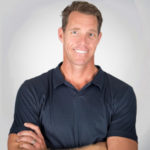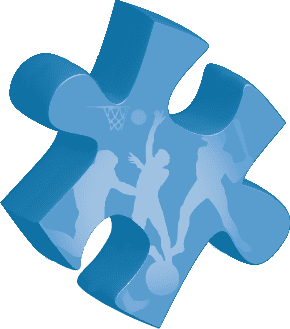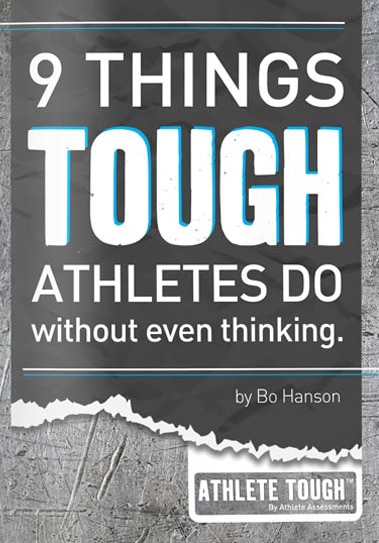By Bo Hanson – Director and Lead Consultant
What we mean by the ‘Circle of Safety’ in sport, is an environment where an athlete feels they can make a total contribution; where they can be themselves, where they can be free to communicate and express themselves without fear of being harassed or bullied or even negatively impacted by anyone else in that environment or even outside it. Physically, it can mean an environment which is safe from an equipment, people and programming perspective. A coach or leader must create this environment for their athletes. From my experience these are rare environments and we want to make it more common by helping coaches create safer teams.
Concept Development
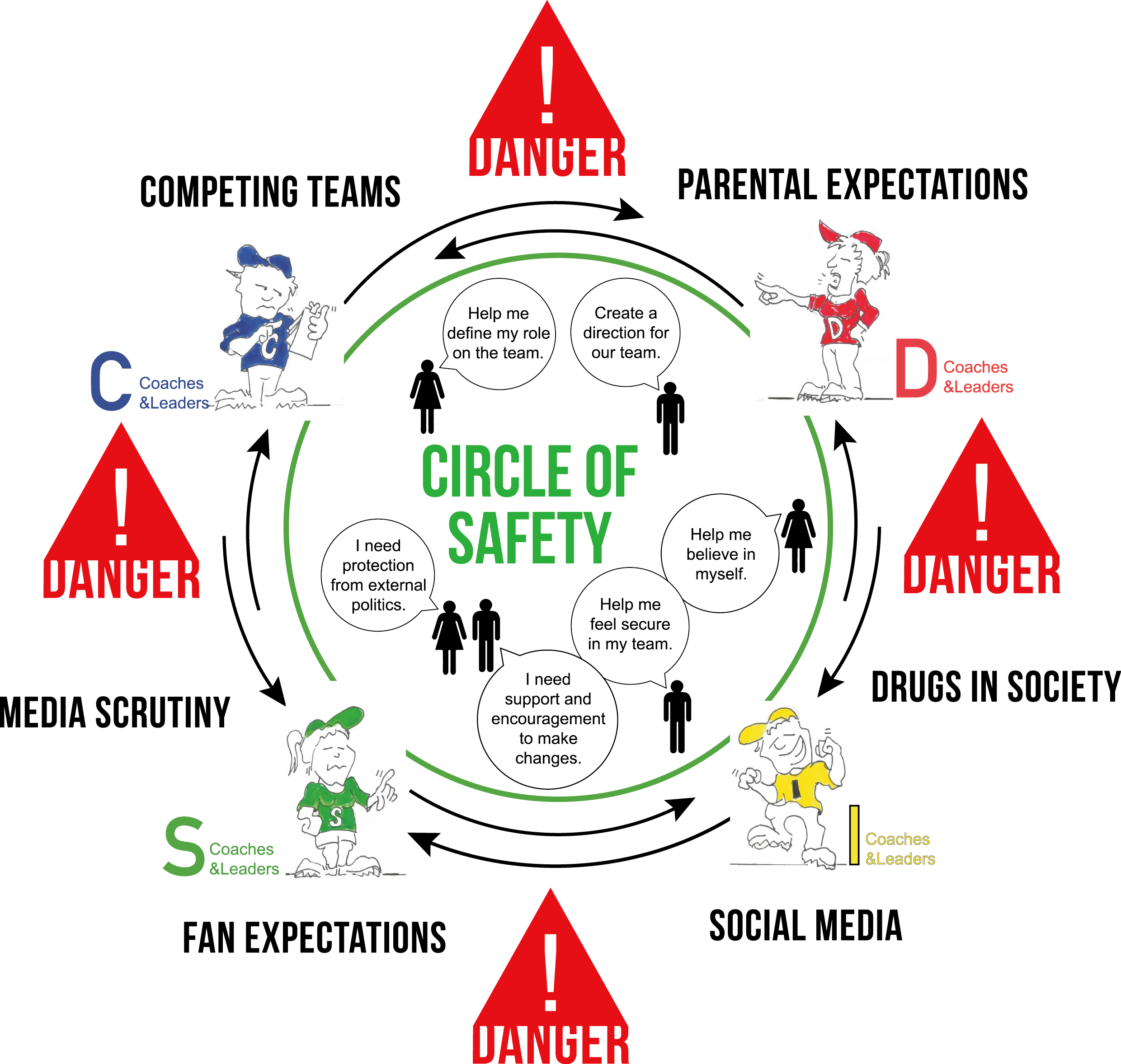 The Circle of Safety is not a new concept, nor did we develop it ourselves, but it’s critical in any sporting environment and we use it with all of our clients. It’s taken from models like Maslow’s Hierarchy of Needs, and Simon Sinek’s, Leaders Eat Last.
The Circle of Safety is not a new concept, nor did we develop it ourselves, but it’s critical in any sporting environment and we use it with all of our clients. It’s taken from models like Maslow’s Hierarchy of Needs, and Simon Sinek’s, Leaders Eat Last.
Within the teams that we work with, the coaches spend a lot of time looking at factors that might impact the Circle of Safety from outside like – the media, the role of drugs in sport, parental expectations of athletes, what the college expects of athletes, the political environment that they have to perform within.
The key concept is that if athletes don’t feel safe, they’re unlikely to make a full contribution and produce their best. Even though Maslow’s Hierarchy of Needs dates back to the 1950’s, it’s still extremely relevant today.
The principles behind the hierarchy are that human beings have levels of needs; these needs have to be met in a certain order if we want to get to that final point of aspiring to be the best possible athlete or person we can be.
The most basic of those needs are for food, air and water. A way to understand the impact of needs on athletes, is to imagine a couple of scenarios; for example, when you’re really hungry you can forget key technical points or game plans. Or a scenario which is quite common for athletes – when you’re absolutely exhausted on the field, your heart rate has been at 180 for a couple of minutes and you feel like you can’t go on – you forget about being be the best player for the team or executing game strategy because one of your basic needs is being compromised – air. Hence why being physically capable and well conditioned can improve decision making.
How Meeting Needs Creates the Circle of Safety
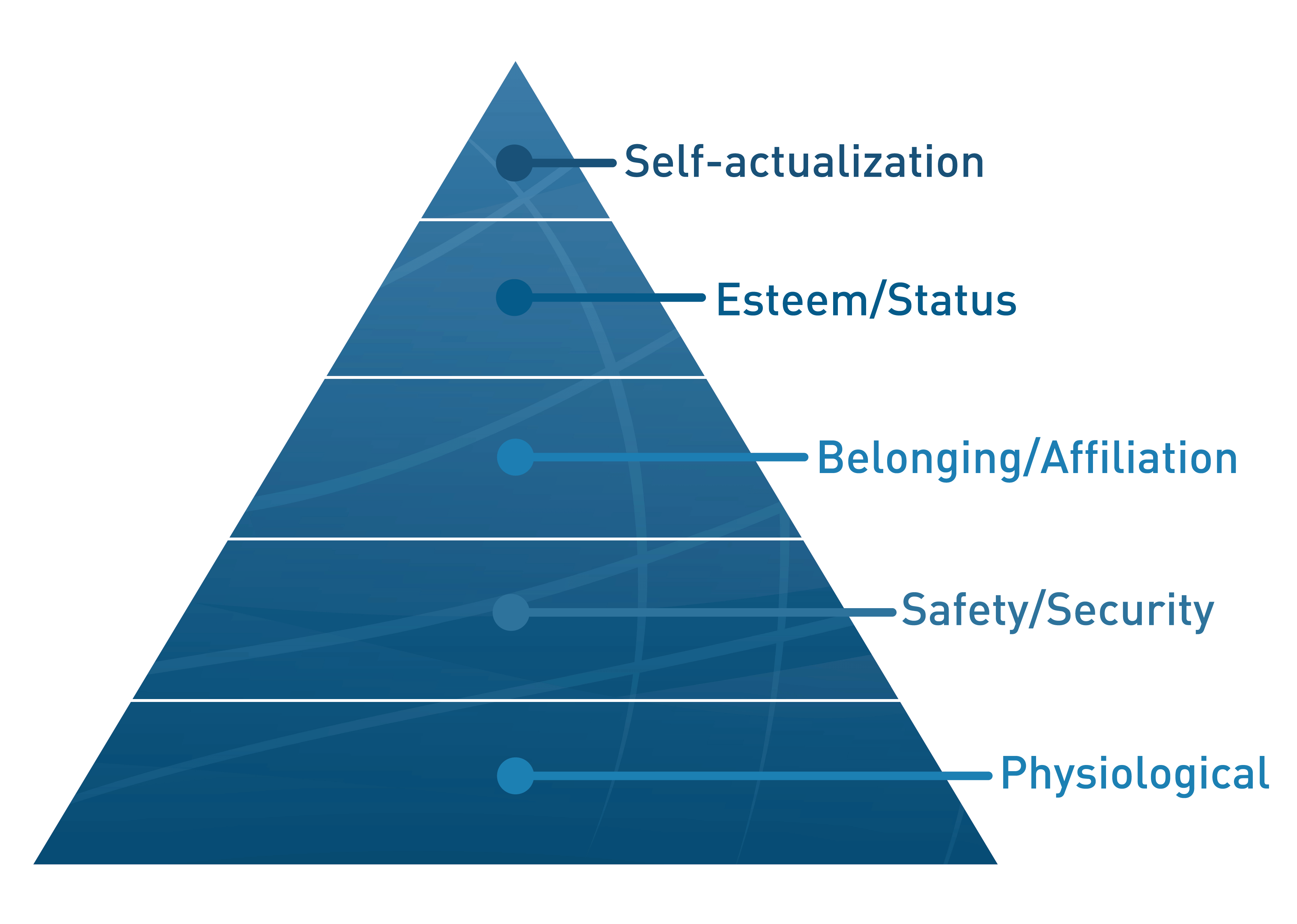 Once we have those needs for food, air and water met, we then have a need for security and safety (physically, emotionally and psychologically). Our need for security and safety can be met by developing a Circle of Safety. In sport we can think of security as being part of the team and safety as being surrounded by people you know you can trust and believe have your back.
Once we have those needs for food, air and water met, we then have a need for security and safety (physically, emotionally and psychologically). Our need for security and safety can be met by developing a Circle of Safety. In sport we can think of security as being part of the team and safety as being surrounded by people you know you can trust and believe have your back.
The natural human response to being in a safe environment is cooperation and trust.
These elements are part of the culture which underpins every successful team. In every single team that we’ve worked with who’ve experienced some level of success, the athletes all talk about the fact that they trust each other, the fact that they supported each other, that they all had a strong level of cooperation and cohesion within the group.
What Happens When You Don’t Have a Circle of Safety
If you don’t have a Circle of Safety, if you don’t have an environment where your athletes feel like they can trust the people around them and believe in each other, where they don’t feel safe, or secure and part of the team, you’ll end up with an environment where the athletes will begin to attack each other, this doesn’t facilitate productive team chemistry or dynamics.
When people feel safe, they’ll make a contribution and this results in team chemistry. The role of the coach is to create an environment where people feel safe and chemistry can develop.
A Circle of Safety improves any sporting environment, it’s beneficial for performance but crucially it’s fundamental and necessary for your athletes as people. This is just one of the topics covered in our program – ATHLETE TOUGH. If you want to know more, check out the Handbook & Video Series produced by 4 x Olympian and 3 x Olympic Medalist, Bo Hanson. It was specifically developed for coaches wanting to know how they can create an environment and program that builds mental toughness in their athletes, effectively and safely. There are 15 chapters covering proven strategies that will help your athletes become, and stay, ATHLETE TOUGH. Visit this link for more information and to view a sample chapter and video!
Where to from here?
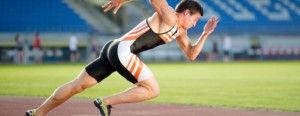
Gain the Upper Hand with Emotional Intelligence
“You have to be able to center yourself, to let all of your emotions go. Don’t ever forget that you play with your soul as

Performing Under Pressure
“The ultimate measure of a man is not where he stands in moments of comfort and convenience, but where he stands at times of challenge

9 things Tough Athletes do without even thinking
Actions always speak louder than words and Tough Athletes take action. You can see their toughness by what they do. Here is our list of
